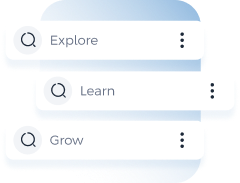
Refine Your Search
...
Explore Financial Academy
About the Academy
Discover our Rich, 60-Year Journey
Jadarat
A Comprehensive System for Skill and Knowledge Development
Governance
Meet our Inspiring Leadership
Success Stories
Check out our Clients’ Reviews and Testimonials


...


231 Reviews
Learn about the concept of accounting, its objectives, and its branches. This program provides a comprehensive understanding of the inputs and outputs of the accounting system, its operational steps from recording to balancing, as well as how to prepare financial statements and use their data to make sound business decisions.
231 Reviews
In the increasingly complex global business environment, understanding the fundamentals of accounting and finance is essential for creating value and maximizing growth. Knowledge of basic financial principles is crucial for success at any job level. The training program aims to teach participants the concept of accounting, its objectives, and its branches. The program includes understanding the inputs and outputs of the accounting system, as well as the operational steps such as recording and balancing. It also covers how to prepare financial statements and use accounting data and information to make sound decisions.
Banking
Capital Market
Insurance
Financing
Accounting and Finance
Not Exist
Lecture
Case Studies +3
Lecture
Case Studies
Brainstroming
Practical Implementation
Exercises and assignments
Pre Exam
Post Exam
All job families in the financial sector
This provides you with the opportunity to select the available times that suit you best for participation in our program. These times represent slots during which we are ready to welcome you and provide assistance and guidance.
Online Training
Understanding Financial Statements
Overview of Financial Statements: Balance Sheet, Income Statement, and Cash Flow Statement
Analyzing the Balance Sheet: Assets, Liabilities, and Equity
Interpreting the Income Statement: Revenue, Expenses, and Profitability
Cash Flow Statement Analysis: Operating, Investing, and Financing Activities.
Online Training
Online Training
Working Capital Management and Cash Flows
Online Training
Cash Management and Liquidity
Wrap-Up and Program Conclusion Recap of Key Learnings and Takeaways
Comprehensive understanding of the concept of accounting, its objectives, branches, and inputs to the accounting system.
Understand the financial statements, their main components and presentation methods according to international standards.
knowledge financial management and its importance in managing the sources and uses of funds efficiently and effectively.
Acquire financial analysis skills to extract the necessary indicators for financial planning.
Be familiar with the basic skills needed for preparing financial plans and budgets
Using the accounting data, accounting information, and financial statements in making rational decisions
